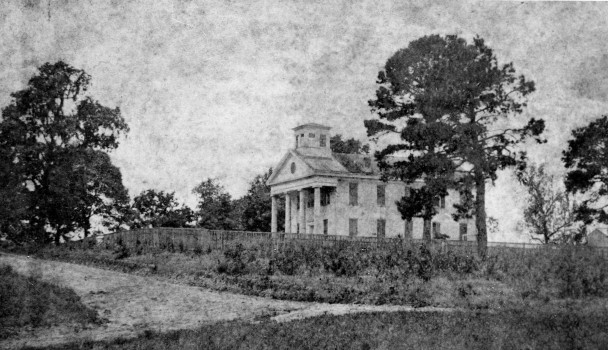This blog post is an updated version of a previous post by Hannah Wiatt Davis which can be found here.

Happy 167th Birthday, Florida State University! In 1851, the first steps were taken by the Florida Legislature (then the General Assembly of the State of Florida) to create the institution we now know as Florida State University. However, it wasn’t until recently that 1851 was accepted as the founding date. Previously, FSU had used 1857, when the State Seminary West of the Suwannee River, the predecessor institution of FSU, first opened its doors. However, the 1857 date isn’t entirely accurate. The process of starting the school began long before students were allowed to study here.
On January 24, 1851, the General Assembly of the State of Florida passed an act establishing two seminaries of learning, one to the east and one to the west of the Suwannee River. It wasn’t until 1854 when the Tallahassee City Council offered to pay $10,000 to finance a new school building on land owned by the city in an attempt to “bid on” being the location of the seminary west of the Suwannee, which the legislature had yet to decide. The $10,000 consisted of the value of the property, the yet-to-be-constructed building, and the remaining balance in cash. Approximately $6,000 was originally committed, with the Council promising to give the city the remaining balance if Tallahassee was determined as the final location. Later in 1854, construction on a school building began and Tallahassee’s city superintendent approached the state legislature to present the case for the seminary to be in Tallahassee. However, state officials failed to make a decision regarding the location of the seminary before the end of the legislative session.
By 1855, the newly constructed building, which was often described as “the handsomest edifice” in Tallahassee, was ready for students. Because of the state legislature’s lack of a decision on whether it would be one of the legislature-designated seminaries, it was not given an official name. Instead, it was alternately called “The City Seminary” and “Tallahassee Male Seminary.”
In 1856, the ball got rolling as the City Council of Tallahassee (hereafter referred to as the Board of Trustees of the Florida Institute) met and designated “The City Seminary” as the “Florida Institute.” It also indicated that “government of the institution or seminary shall be under the direction of a president” and decided that “a preparatory school will be established in connection with the academic or collegiate department of the institute.” It was established that one of the president’s duties would be to publish a “Catalogue Course of Studies” for the institution. Later in 1856, William (W.Y.) Peyton, previously principal of The City Seminary, was unanimously elected by the Board of Trustees of the Florida Institute as the first president of the Institute.
By late 1856, the General Assembly passed legislation declaring that “the Seminary to be located West of the Suwannee River be, and the same is hereby located at the City of Tallahassee in the County of Leon.” There were several conditions that needed to be granted for this to occur – “the proper and authorized conveyance of said Lot and College edifice thereon be made to the City of Tallahassee to the Board of Education,” that Tallahassee “guarantee to said Board of Education the payment of the sum of two thousand dollars per annum forever, to be expended in the education of the youth of said City, in such manner and on such terms as shall be agreed between the corporate authorities of said City and the Board of Education,” and that Tallahassee “shall pay to the Board of Education as much money in cash as shall be found necessary after a valuation of the Lot and College edifice aforesaid, to complete the sum of ten thousand dollars.”
With all of the requirements fulfilled, the State Seminary West of the Suwannee River was allowed to open its doors and so began FSU’s long history.
To see more photographs, ephemera, and artifacts related to the history of Florida State, check out the FSU Heritage Digital Collections or like the Heritage Facebook page.